Samick Artist Series SG450 (1/2)




The SG, or 'Spanish Guitar', is without a doubt Gibson's best solid-body guitar design. Unlike the massive overweight Les Paul, the SG is small and light and just feels like fun in your hands. Sound-wise, the two are indistinguishable. The SG body has comfortable bevels and round-overs in place of the Les Paul's arm-gouging sharp bound edges. And the little devil horns are unmistakable.
Samick is a Korean guitar manufacturer, one of the largest in the world, and known for its quality products. They have produced many Epiphone SGs ( and probably more than a few that sold as Gibsons ) and when they decided to sell a few under their own name, they really dolled them up. This is a terrific guitar. From the details and the serial number, I believe this one is a 1996.
I got this guitar for a pittance on eBay. It's crazy how badly-made guitars that say Gibson on them are worth a fortune, while well-made guitars that say Samick on them can be had for a song. I'd rather have this than a real Gibson any day. Someone should tell Gibson about grain filler. And finishing, and woodwork, and electronics. Gibson should just get out of the musical instrument business, and make furniture, or something more suited to their skills, like shipping pallets. Actually, their furniture would probably come out just as bad as their guitars.

Years ago, I knew someone who had a Gibson SG, and the body split along the center seam, starting at the strap button. Gibson would not cover it, they said it was the result of abuse, and I know for a fact it was not. It was the result of unseasoned wood warping and pulling apart a badly-glued joint. Bad materials, bad workmanship. Do what you want with your money, but I'm not paying extra for that. I'm not paying for that at all.
The other thing Gibsons are famous for is pop-off headstocks, due to their terrible faulty design. This guitar uses a scarf joint for the headstock that will never break. It also has a very solid long joint for the set neck; you can't say that for most Gibsons either. Finally, it has a modern double-acting truss rod. This guitar is much better than a real Gibson, because Gibson religiously preserves all their mistakes and design flaws.
The fit, finish, and hardware on this Korean guitar are impeccable. The body is made up of three pieces that don't match particularly well, that is my only complaint. This guitar has definitely seen its share of use, and neglect. When I got it, the first thing I did was strip off all the hardware and polish out the 'mojo'. I replaced all the corroded nickel fasteners with shiny new stainless steel from the boatyard, and replaced the clunky speed knobs with much nicer and more authentic silver-tops. Cleaned the pots, installed a new legible switch plate, and re-strung it. And it's a great guitar, and beautiful too.
Here is probably the SG's most well-known proponent:
Angus Young is actually a tiny guy (5'2"), and any guitar looks huge on him. But he's a giant rocker !!!
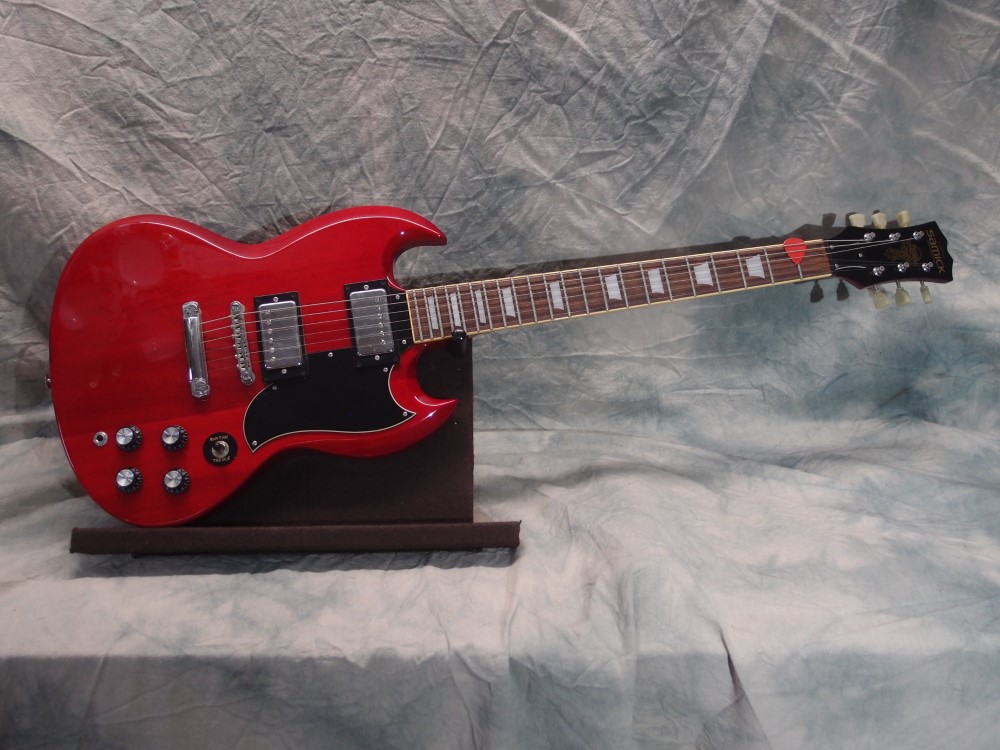

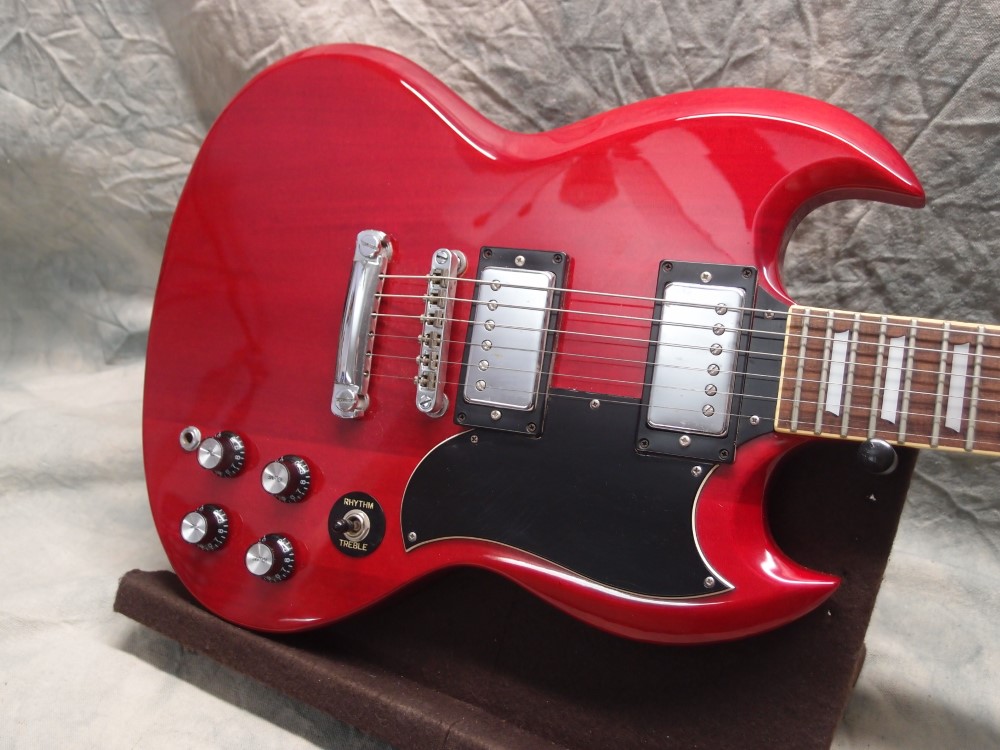
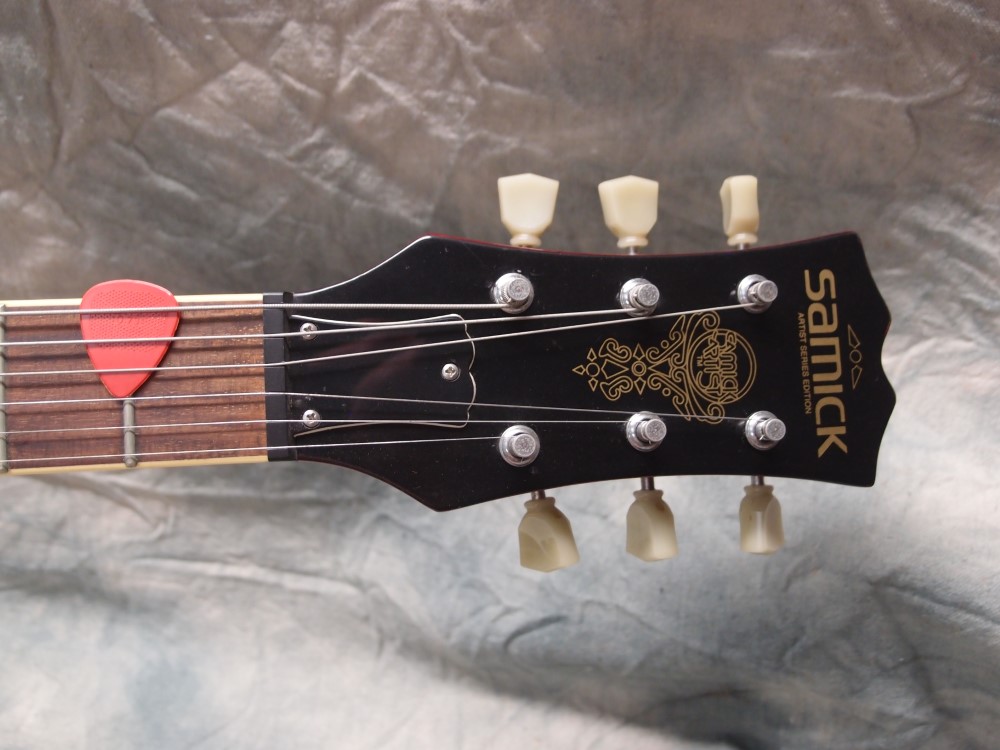



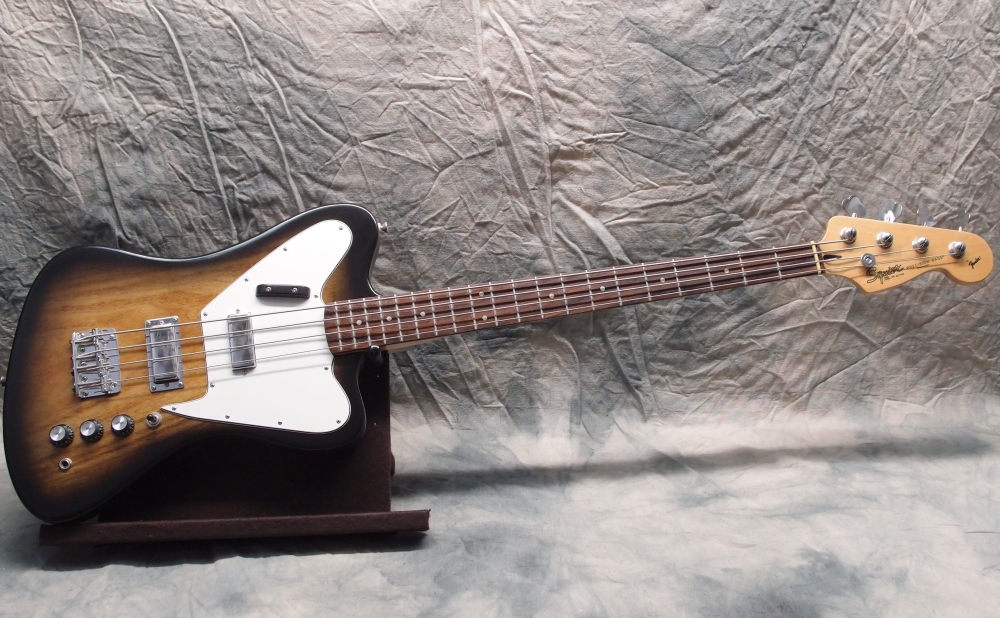
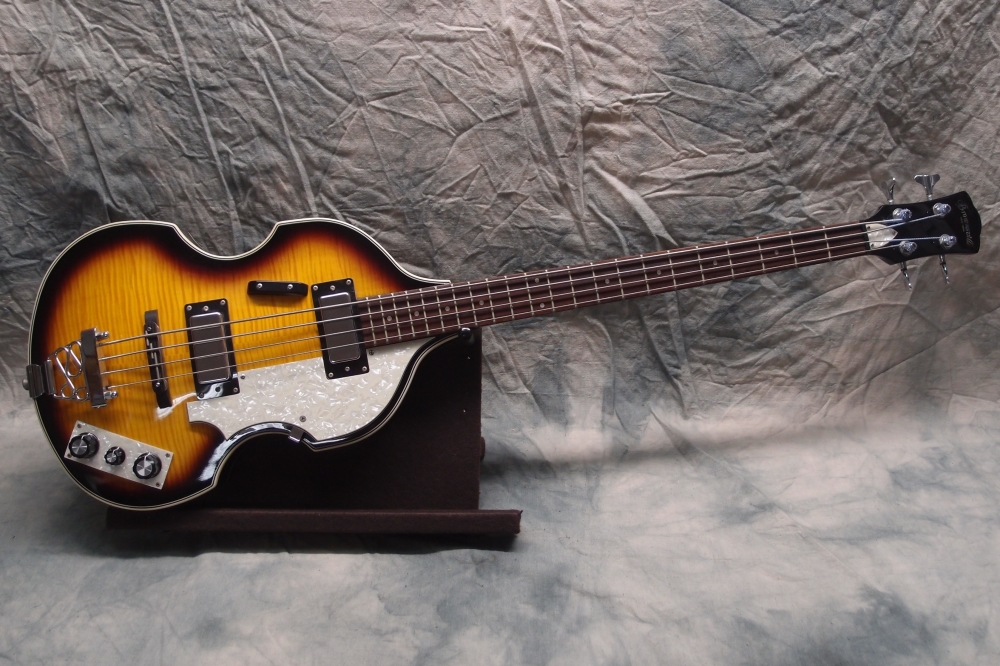
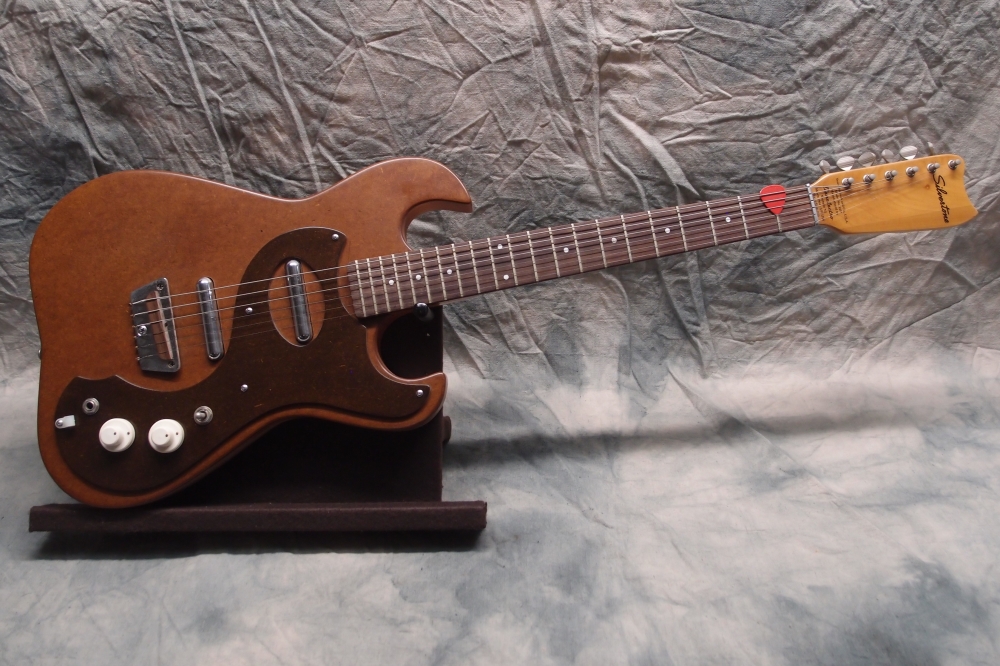
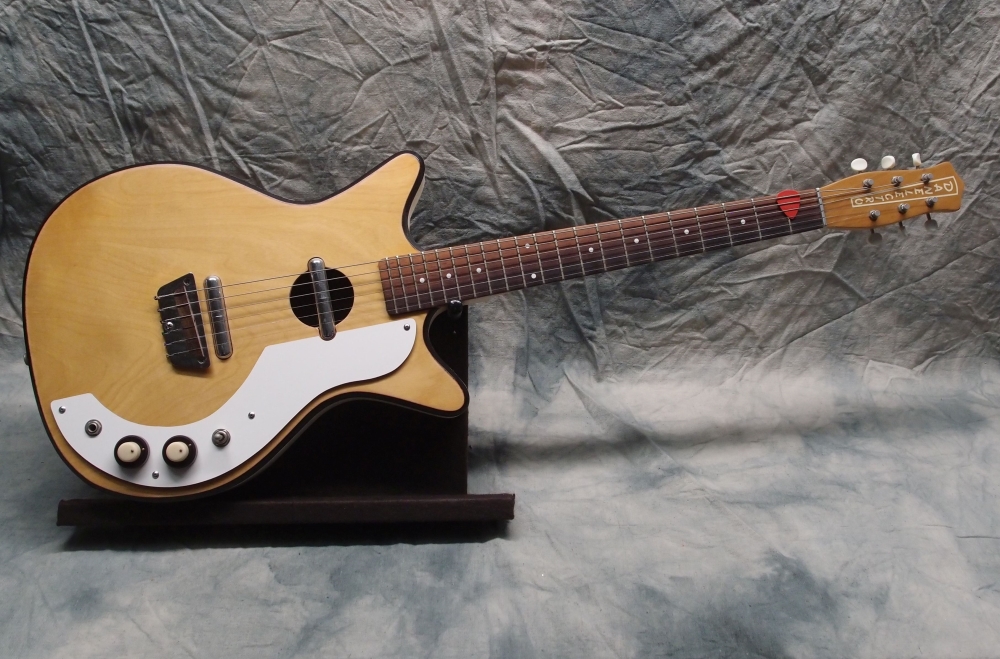

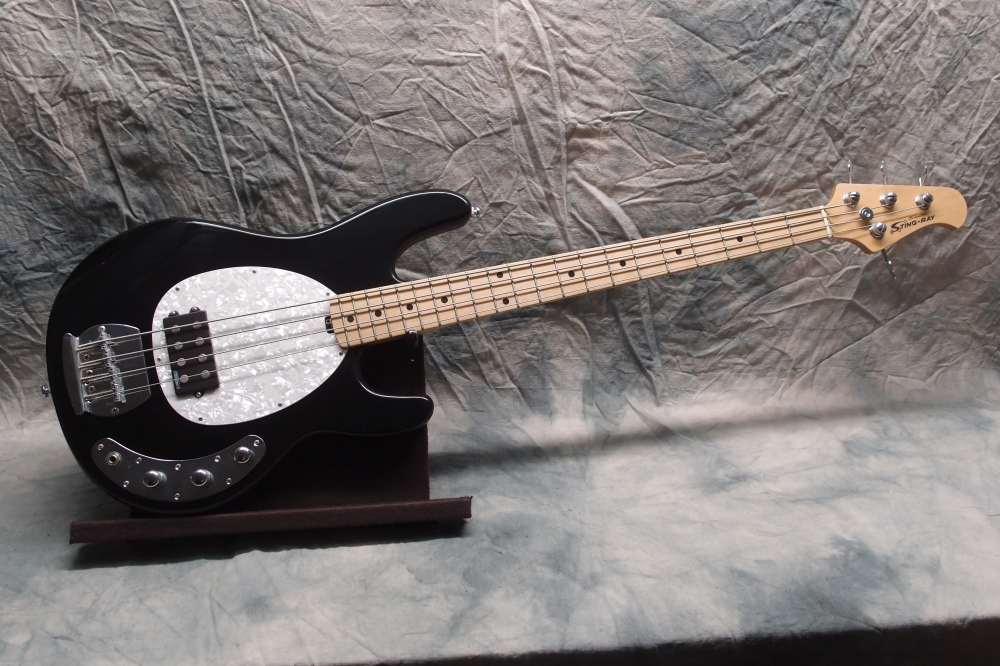

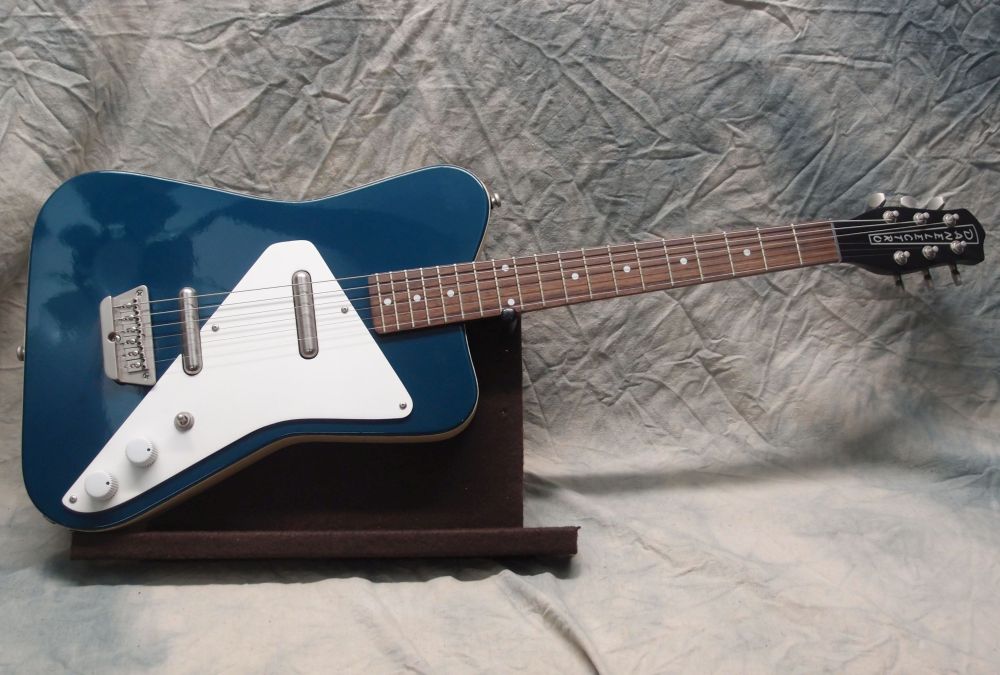
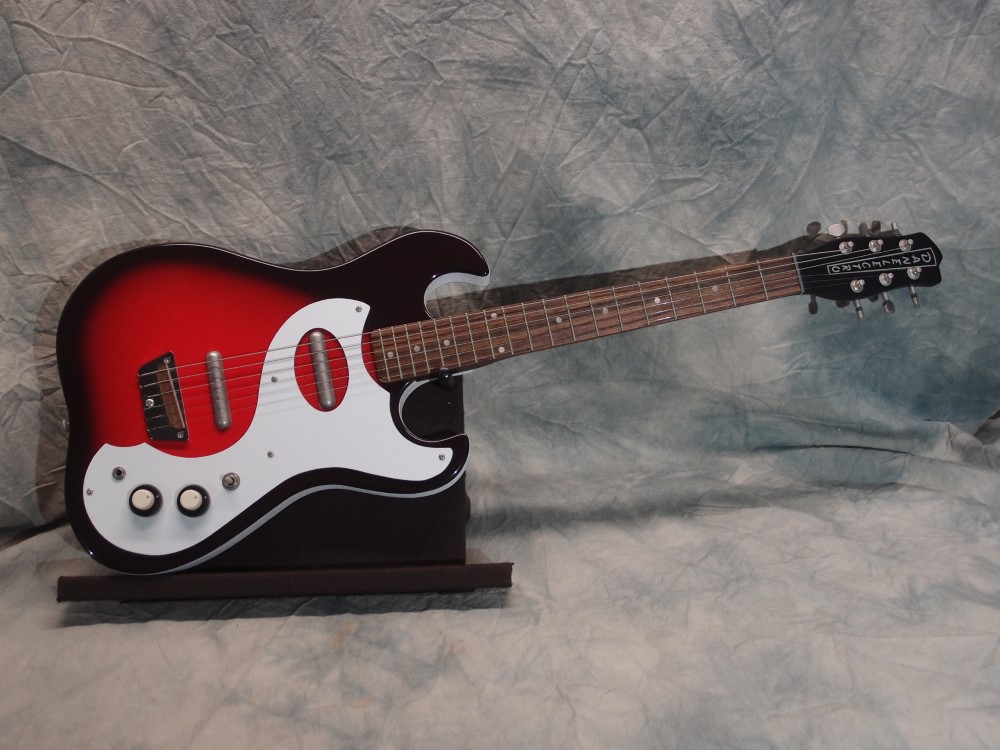

Questions or Inquiries?
Just want to say Hello? Sign the .